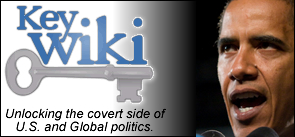Just Released Afghanistan MOAB Strike Video
By: Denise Simon | Founders Code KABUL, Afghanistan (April 13, 2017) – A GBU-43/B Massive Ordnance...
Read MoreThe Denise Simon Experience Hosted by DENISE SIMON, the Senior Research / Intelligence Analyst for...
Read Moreby TMH | Nov 17, 2015 | Authors, Constitution, Military, Politics, Religion, Survival, Terresa Monroe-Hamilton, Terrorism | 1 |
By: Terresa Monroe-Hamilton Obama’s speech yesterday was an utter embarrassment to America....
Read Moreby TMH | Sep 21, 2015 | Authors, Military, Politics, Religion, Survival, Terresa Monroe-Hamilton, Terrorism | 5 |
By: Terresa Monroe-Hamilton The last thing Lance Cpl. Gregory Buckley Jr. told his father in 2012,...
Read Moreby TMH | Jul 15, 2015 | Constitution, History, Military, Politics, Religion, Survival, Terrorism, Uncategorized | 0 |


My beloved husband,
GARRY HAMILTON,
passed away
on September 24th, 2022.
I will love you always.

